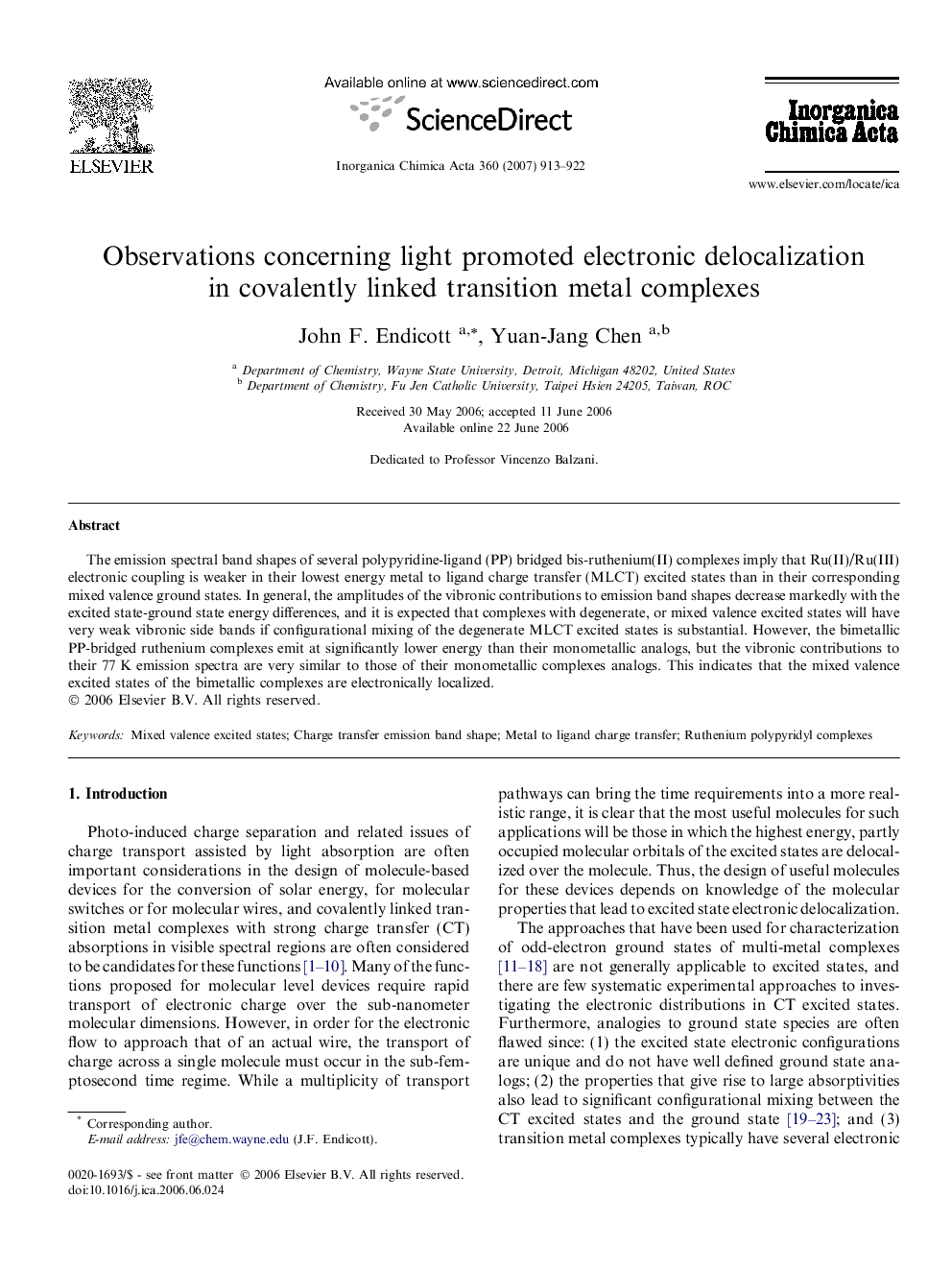| Article ID | Journal | Published Year | Pages | File Type |
|---|---|---|---|---|
| 1312768 | Inorganica Chimica Acta | 2007 | 10 Pages |
The emission spectral band shapes of several polypyridine-ligand (PP) bridged bis-ruthenium(II) complexes imply that Ru(II)/Ru(III) electronic coupling is weaker in their lowest energy metal to ligand charge transfer (MLCT) excited states than in their corresponding mixed valence ground states. In general, the amplitudes of the vibronic contributions to emission band shapes decrease markedly with the excited state-ground state energy differences, and it is expected that complexes with degenerate, or mixed valence excited states will have very weak vibronic side bands if configurational mixing of the degenerate MLCT excited states is substantial. However, the bimetallic PP-bridged ruthenium complexes emit at significantly lower energy than their monometallic analogs, but the vibronic contributions to their 77 K emission spectra are very similar to those of their monometallic complexes analogs. This indicates that the mixed valence excited states of the bimetallic complexes are electronically localized.
Graphical abstractThe dipyridyl-pyrazine bridged bis-(tetraammineruthenium(II)) complex has been found to emit at relatively low energy in the NIR. The amplitudes of the vibronic side bands for this and related polypyridine-bridged Ru(II) complexes indicate that their mixed valence excited states are electronically localized.Figure optionsDownload full-size imageDownload as PowerPoint slide
